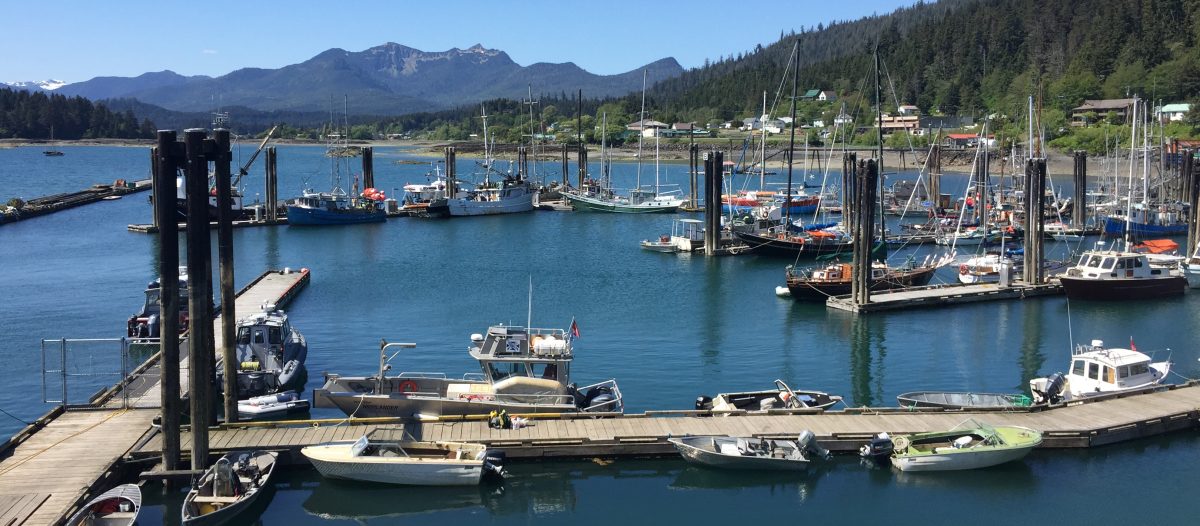Second Herring Working Group Meeting
The Ocean Modeling Forum (OMF) convened a working group comprised of traditional knowledge holders, social scientists, fisheries scientists, fisheries managers, representatives of the fishing industry, and experts in herring ecology to explore aspects of the Pacific herring social-ecological system and improve advice for managing herring fisheries. The working group brings together multiple models and types of information, including local and traditional knowledge as well as conventional fisheries data, to explore the consequences for fisheries, ecosystems, and people of incorporating spatial complexity in herring population structure into models of the herring social-ecological system. We are exploring these questions in a comparative framework, comparing the social-ecological herring systems in Haida Gwaii, British Columbia and Sitka, Alaska. The group will provide broadly-applicable advice on incorporating multiple forms of knowledge into formal fisheries assessments, and on evaluating fisheries sustainability in terms of ecological, economic, and social outcomes.
The group is using multiple models and forms of analyses to pursue four main research questions:
- What are the impacts of herring fisheries on ecological, economic, social and cultural components of social-ecological systems?
- How can traditional/local knowledge and spatial considerations be incorporated into conventional herring fisheries assessments?
- How does spatial structure of the fisheries system impact the distribution of ecological, economic and social benefits in the system?
- How does governance influence the sustainability of herring social-ecological systems?
The OMF’s Herring Case Study participants met for the second time in Skidegate, British Columbia, from 10-12 May 2016. Input and perspectives were invited from the local Haida Gwaii community, including representatives and elders of the Haida Nation, as well as participants from Parks Canada, local management and advisory bodies, the fishing community, and Fisheries and Oceans Canada. Over the course of two days of presentations and discussions, the group achieved the following:
- Approaches for integrating traditional knowledge, rules and governance into models were discussed.
- Preliminary structures for new ecological models were presented for use in exploring alternative assumptions about herring ecology, including movement.
- Preliminary structures for new ecological models were presented for use in exploring the impacts on social, cultural, ecological and economic endpoints of conducting herring assessment and management at small spatial scales.
- Ongoing data collection related to social and cultural connections to herring in Haida Gwaii was presented.
- Potential approaches to evaluating the distribution of economic benefits of fisheries were presented.
- Potential approaches for evaluating the role of governance in the sustainability of herring social-ecological systems were discussed.
- Potential approaches for explicitly including and evaluating cultural benefits and costs were discussed.
Local participants provided the OMF team with a number of insights about the structure and function of the Haida Gwaii social-ecological system. They expressed a desire for the OMF team to address a number of key issues surrounding herring, including:
- The need to develop a common understanding of the historical baseline herring abundance;
- The need to understand the potential impacts of commercial sac-roe fisheries on local spawn-on-kelp fisheries;
- The ecological and fisheries effects of size selectivity of commercial sac-roe fisheries;
- The impacts of apparently declining habitat quality (especially kelp) on herring populations;
- The consequences of a perceived power imbalance in decision processes for the sustainability of the fisheries system; and
- The need to develop stable herring resources for the entire social-ecological system.
Key goals before the next group meeting include:
- Evaluate ways to formally and quantitatively evaluate impacts of governance on social outcomes;
- Continue to develop a paper comparing governance in Haida Gwaii and Sitka;
- Continued development of a spatial herring model appropriate for simulation testing of management strategies. The model should be able to address such issues as fleet allocation, possible migratory options, and use of traditional knowledge to inform possible stock structure scenarios.
- Produce a heuristic model evaluating the potential impacts of the loss of large, old fish on the sustainability of herring fisheries;
- Create a visual schematic of fishing operations and economic benefit flows;
- Model spawn occurrence for Haida Gwaii, including incorporating traditional knowledge as prior information; and
- Develop a new spatially-explicit herring stock assessment model that is fitted to data from BC and AK.
Major outstanding questions include:
- In evaluating the impacts of herring management on social, cultural, and economic endpoints, which specific metrics will be used and linked to changes in the availability of herring at local and regional scales?
- How will the group evaluate the impacts of herring management on the food web, i.e., non-human predators?
- How can characteristics of the governance system be included in models of the herring social-ecological system?
The group next meets from August 23-25, 2016, in Sitka, Alaska.
